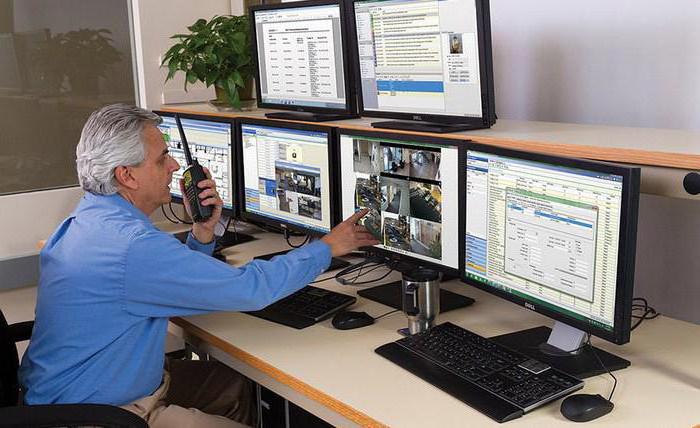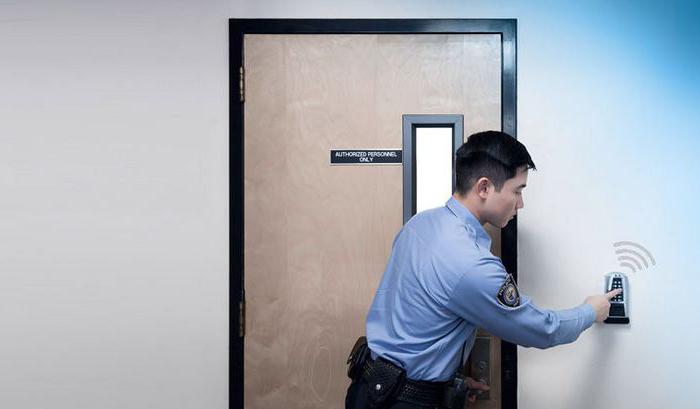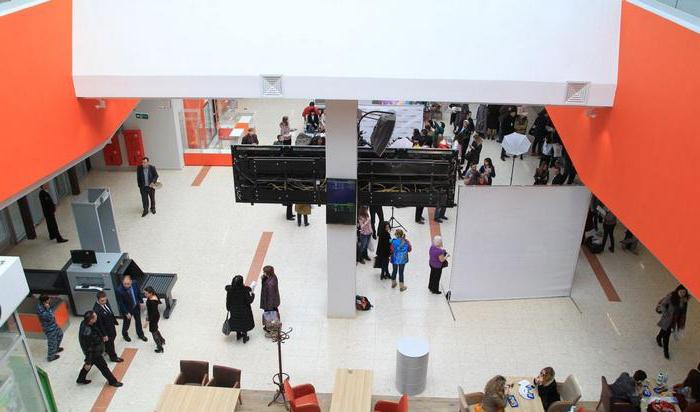Creating a reliable and effective security system in any organization is a complex process. Throughput and intraobjective modes on the territory of the facility are its integral elements. 
Appointment
Access and intra-facility regimes at the objects of protection are established to provide organizational, regulatory and material guarantees for the detection, prevention and suppression of attacks on property, legitimate interests, intellectual property, information and production discipline of the company. The formation of a security system, of course, requires certain costs. Meanwhile, if you evaluate the negative factors that affect the organization, the costs will not seem so significant. The access and intraobjective regime at the enterprise ensures its stable economic position, minimizes probable losses. The development and implementation of security systems can take different time depending on the capabilities of the company.
Important point
Access control at a guarded facility is difficult to organize. The mechanism for its implementation is based on the application of restrictions and prohibitions aimed at certain entities crossing the boundaries of structures, buildings, land, premises, to ensure security, preserve the interests and rights of others. This method of regulating relations in the business sector should be clearly regulated by applicable law. Access control at an enterprise is a set of organizational and legal rules and restrictions, in accordance with which subjects are allowed to enter separate rooms or structures. It applies to company employees, visitors, materiel and vehicles.
Goals
Access control at the guarded object acts as an integral element of the overall security system. Its organization is carried out strictly in accordance with applicable law, the charter of the company, other regulations governing the activities of an economic entity. Access control at the enterprise is necessary for:
- Defenses legitimate interests companies, maintaining order, discipline.
- Preservation of property of the organization, ensuring the efficient and rational use of property.
- Achievements of external and internal stability of the enterprise.
- Providing increased profits.
- Preservation of intellectual property and trade secrets.

Requirements
Access control at the enterprise is ensured by the creation of special points. The whole system should:
- Ensure authorized passage of employees and visitors, export / import of material assets and products, stable activity of the company.
- Exclude unauthorized penetration of unauthorized entities into sections, into separate rooms, buildings, as well as uncontrolled exit / entry of vehicles.
- Ensure timely detection of threats to the interests of the company. The duties of the employees of special points also include clarifying the causes and conditions for the occurrence of factors that can cause moral and material harm to the company, disrupt its normal functioning and development.
- Formation of reliable guarantees for maintaining the organizational stability of internal and external relations of the enterprise. The staff of the points are required to develop a mechanism for quick response to probable threats.
- Stop attacks on company interests.Employees responsible for safety should, using economic, legal, organizational, technical, socio-psychological and other means, identify sources of threats, reduce their activity or eliminate them.
Specificity
Access control, as mentioned above, is necessary to ensure material, organizational and regulatory guarantees of security. The latter consist in the interpretation and implementation of legal requirements, understanding the limits of their action. They provide for the determination and enforcement of the law in the process of work of the company’s divisions and employees when using restrictions, sanctions on legal entities and citizens encroaching on the interests of the company. Organizational guarantees are created by maintaining the efficiency and effectiveness of the process control system for detecting and suppressing threats to the functioning of the enterprise. They also provide for the use of incentive mechanisms, staff training. Material guarantees are created through the allocation and use of technical, material, intellectual, information and other resources of the company for the timely identification, mitigation and elimination of sources of threats, prevention of possible damage, creation of favorable working conditions. 
Preparatory activities
How is access control formed in the enterprise? The provision on ensuring security in organizations determines that key events are developed by security personnel, and then approved by the head of the company. Every employee should know that the organization has access control. Responsibility for its organization lies with the head of the security department. Its employees carry out the practical implementation of measures ensuring access control at the enterprise. Instructions for them are approved by the head of the company. The employees of the security department are required to know the rules and restrictions provided for in the company, the existing acts on the procedure for the passage of employees and visitors, entry / exit of vehicles, import / export of material assets. Access control can be introduced both throughout the organization as a whole, and in its individual buildings, buildings, departments, special rooms. All employees of the company, maintenance personnel must strictly follow the current rules. In each case of violation of access control, the head of the enterprise is obliged to conduct an internal investigation, to hold those responsible accountable.
Features of the development of regulatory documentation
A person who includes certain activities in the access control regime must find a rational and reasonable combination of restrictions and prohibitions with the interests of the economic activity of the company. System development begins with the definition of initial information. In the process of evaluating data, the responsible person establishes the key points of the regulatory documentation on access control. The definition and analysis of information should be carried out in the following order:
- Acquaintance with the organizational structure of the company, the locations of its individual elements, the specifics of their activities. Clarification of these issues contributes to the allocation of sites, buildings, premises on which access control should operate, as well as to the determination of the nature of the checkpoint to ensure the admission of vehicles and employees.
- Assessment of the daily volume of the flow of goods, cars, people, material values. Based on the real state of the checkpoints, you can get an idea of the capabilities of the checkpoint and bring them in line with the tasks of the main activity in the company. This kind of assessment will contribute to the selection of the best option for control and automation of access / passage control to the territory.
- Highlighting the importance of the categories of goods, transport, premises, structures, as well as persons entering / leaving buildings. To ensure clarity in determining the classification of objects, it is advisable to carry out in accordance with the access conditions and the level of security. Bringing the premises to a specific category will justify and regulate:
- access conditions for employees and visitors, determination of publicly accessible, closed areas, as well as premises / buildings with limited access;
- suggestions to the company’s management on the development of the best option for passing citizens, transport and material assets;
- the availability and type of physical security;
- types of technical devices used.

Access Control at a Guarded Facility: Sample Rules
The documentation for security measures should include general and thematic sections. The first should indicate:
- Normative acts in accordance with which the instruction is developed.
- Definition of a security system, its goals.
- Responsible persons for ensuring the implementation of activities.
- Requirements for equipping the premises.
- Punishments for persons violating access control at the enterprise.
The sample rules also contain a description of the procedure in accordance with which the admission of employees, business travelers, and visitors through the checkpoint is carried out. In the appropriate section, it is advisable:
- List all the control points, describe their purpose, characteristics, location. A uniform numbering should also be defined for them.
- Describe gearbox equipment requirements.
- Determine the order of passage of visitors and employees to the territory of the facility and to specific units / premises / buildings.
- Identify areas where citizens and representatives of other companies are not admitted.
Departure / entry of transport, export / import of goods
The relevant section defines the rules for:
- Cars owned by the company, employees, and third-party companies.
- Import / export of goods both during working and non-working hours.
- Employees responsible for processing documents for export / removal of valuables.

Additional sections
Safety regulations should provide for:
- Types of passes, their status and quantity.
- Rules for registration and issuance.
- Replacement and re-registration procedure.
- Actions in case of loss of a pass.
Mandatory in the normative documentation is a section that defines the responsibility of entities to maintain a security system, accounting and reporting, the procedure for storing acts and seals.
Access control at the enterprise: types of passes
Admission to individual rooms, buildings or to specific areas is carried out according to special documents. The pass may be temporary, material, one-time or permanent. Forms for them are developed by company management or the security service. Passes of different types should differ in appearance and have protection. All these documents, except material ones, are issued in the corresponding department. To obtain a pass, a written application is submitted.
Permanent Documents
Such passes are issued to staff members of the company. They can also be obtained by third-party employees who provide ongoing service to the organization. Passes of this type can be divided into subgroups. The number of additional categories, as well as their purpose, is determined in the safety rules. Permanent passes can be held by employees or surrendered at a checkpoint. The latter most often occurs when an employee is sent on a long business trip or if he is absent from work for other reasons (illness, for example). If you leave a permanent pass at the checkpoint, an appropriate entry is made in the accounting journal.Permitting documents of employees dismissed from the enterprise are subject to destruction. 
Temporary forms
Such passes are issued to citizens accepted under a fixed-term contract, seconded to the organization. These documents are usually located at the checkpoint. The duration of temporary passes, as well as the procedure for their issuance and issuance, is determined in the safety rules. These permits can be with or without a photo. In the latter case, the pass will be valid only upon presentation of the passport.
One-time documents
Such passes are intended for customers and visitors. They are used for a one-time visit to the organization or its specific units and do not contain photographs. Such documents are valid upon presentation of a passport and for a certain time. The color of the blank passes should be periodically changed. Control over entities included in the company is carried out using records on the back of the document. Here the time of the visit is affixed, which is certified by the signature of the person who received the visitor. One-time passes are seized by the controller at the post upon exit of citizens. About the subjects who did not leave the building at the end of the time specified for them, the controller reports to the duty officer of the checkpoint. The latter, in turn, takes measures to clarify the circumstances of the delay.
Material permits
Such passes are intended for the removal / export of material assets. They are issued by the administration of the company. The duration of such passes is defined in the safety rules. Permits of this type are seized at the checkpoint. At the checkpoint must be present forms of all passes provided by the organization. 
Gearbox equipment
Checkpoints are created to implement access control. Checkpoint equipment should help ensure compliance with the rules and restrictions in force in the organization. At the checkpoint, checks of passes, documents, inspection of transport, cargo are carried out. Gearbox equipment should:
- Exclude any possibility of unauthorized entry or exit / exit.
- Contribute to reducing the duration of document verification and screening.
- Provide security on duty.
- Contribute to minimizing or eliminating employee errors when passing citizens and vehicles.
At the checkpoint must be present all the necessary means of communication and signaling to call backup staff. In the control point, it is advisable to place an internal telephone and a list of company administration numbers. At the checkpoint, it is recommended to equip a room for screening of persons passing into the territory. In addition, it is advisable to equip at the checkpoint a storage room, wardrobe. At the direct passage of citizens, a turnstile is installed with locking mechanisms-constipation.






